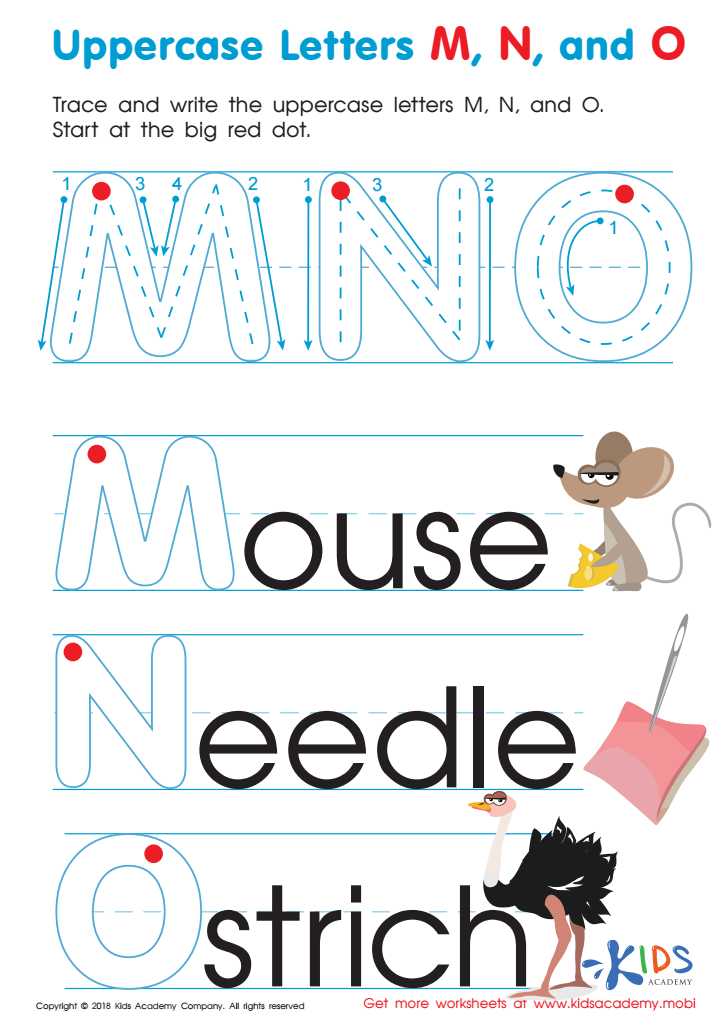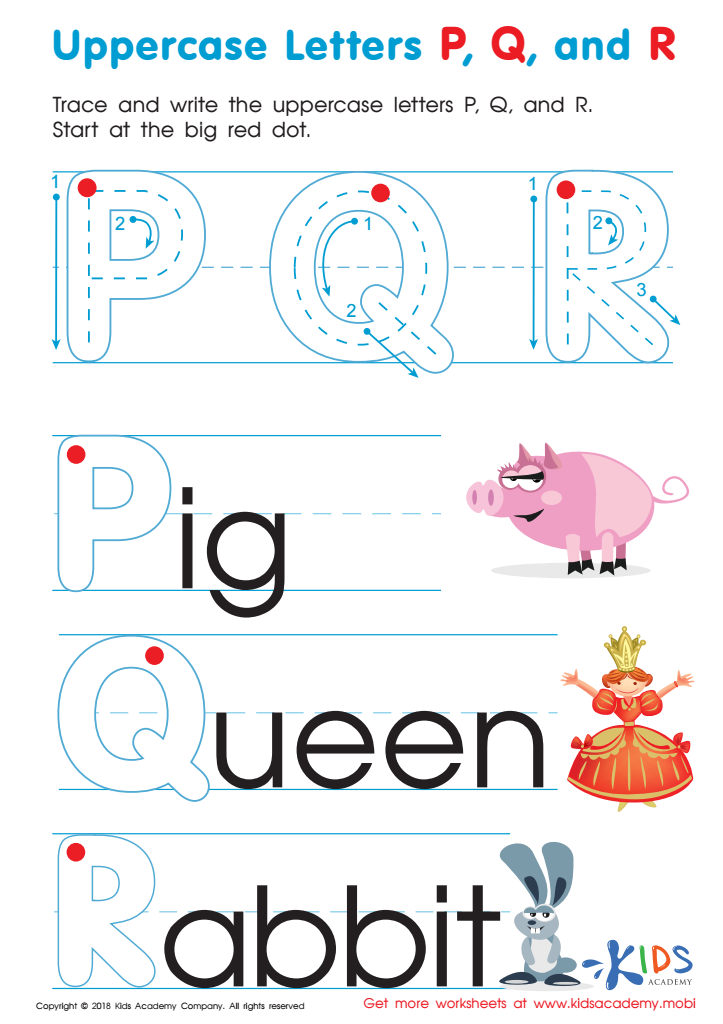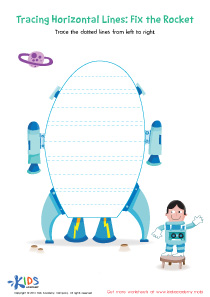Letter Tracing Practice Normal Upper & Lowercase Letters Worksheets for 5-Year-Olds
3 filtered results
-
From - To
Kickstart your child’s writing journey with our "Letter Tracing Practice: Normal Upper & Lowercase Letters Worksheets" designed for 5-year-olds. These printable worksheets provide engaging activities to help children master proper letter formation while building essential fine motor skills. Children will enjoy tracing uppercase and lowercase letters, reinforcing their understanding of the alphabet and laying a solid foundation for writing. With a focus on fun and interactive learning, our worksheets make handwriting practice enjoyable and effective. Perfect for home or classroom use, give your child the tools they need to succeed in their literacy development today!


Lowercase Letters j k l Worksheet


Uppercase Letters M, N, and O Worksheet


Uppercase Letters P, Q, and R Worksheet
Parents and teachers should prioritize letter tracing practice for 5-year-olds because it lays the fundamental groundwork for literacy and fine motor skills development. At this critical age, children's brains are highly receptive to learning and forming new habits. Tracing uppercase and lowercase letters helps children learn to recognize the shapes and sounds of each letter, which are crucial first steps in reading and writing. Familiarity with letters accelerates their ability to comprehend text and spell words accurately.
Moreover, practicing letter tracing also hones fine motor skills necessary for writing. It strengthens hand muscles and improves coordination, enabling children to control a pencil and form letters more precisely. This foundational practice can ease their transition to writing sentences and paragraphs, improving overall academic performance in the long term.
Additionally, letter tracing activities can boost a child's confidence and engagement in learning. Successful mastery of each letter provides a sense of accomplishment that motivates further educational exploration. Parents and teachers who incorporate letter tracing in early childhood education provide invaluable support to children, fostering their cognitive development, creativity, and love for learning. Providing these opportunities is essential in shaping a child's future reading and writing abilities, making it a meaningful priority.

 Assign to the classroom
Assign to the classroom








